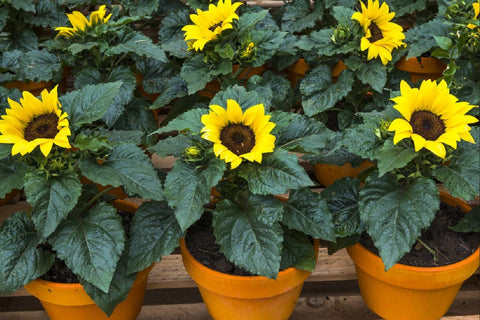Flower beds are a pearl in the garden. They adorn our lives with colorful flowers and lush green leaves. However, flower beds also face various threats, such as weather changes, pests and weed invasion. Therefore, the importance of protecting flower beds is self-evident. This article will introduce you to some effective methods and tips to help you create a healthy and beautiful garden.The following content also has some reference value for raised garden beds.

First, choose the right location and soil preparation
- Sun and shade: Flowers need plenty of sunlight to flourish, so choose a location that is full of sunlight. At the same time, also consider providing appropriate shade to avoid too strong sun exposure.
- Soil testing and improvement: Before planting, conduct soil testing to understand the pH, nutrient content and drainage of the soil. According to the test results, soil improvement is carried out, adding organic fertilizers, leaf rot soil and other appropriate soil amendments.
- Weed removal: Remove weeds around the flower bed to prevent them from robbing water and nutrients. Use the appropriate tools and methods to ensure that the roots of weeds are completely removed to avoid regrowth.
Second, scientific watering and fertilizer application
- Watering technique: Water reasonably according to the needs of different plants. Avoid over-watering or under-watering. Water in the morning or evening to avoid evaporation in the hot sun. Use a drip irrigation system or sprayer to distribute water evenly.
- Fertilizer selection and application: Choose the fertilizer suitable for different plants and apply it correctly according to the package instructions. Organic fertilizers are a good choice because they provide nutrients needed by plants and improve soil quality.
- Nutritional supplements: Check the leaves and flowers of plants regularly for signs of malnutrition. Supplement as needed, such as adding fertilizer with missing nutrients or spraying foliar fertilizer.
Third, prevent pests and diseases
- Inspection and monitoring: Regularly inspect the plants in the flower bed and watch for any unusual or suspicious leaves, stems and flowers. Early detection of the signs of pests and diseases can lead to timely measures for control.
- Biological control: The introduction of beneficial insects and animals to control pests. For example, some insects such as ladybugs and parasitic wasps are natural enemies and can help control pest populations. Animals that prey on pests, such as birds, frogs and lizards, can also be used.
- Natural insecticides: Use natural insecticides to control pests. For example, sprays made with chili peppers, garlic, Onions, and soap can effectively repel pests. In addition, take advantage of mutually beneficial relationships between plants, such as planting some flowers to attract beneficial insects to reduce the number of pests.
- Disease control: Reasonable planting and close planting can reduce the spread of diseases. Prune and remove infected plant parts promptly to prevent the spread of the disease. Use appropriate plant protection products to combat disease, but pay attention to the correct use and dosage.
Four: Physical protection measures

- Establish boundaries: Set up suitable boundaries around the flower bed, such as a flower bed fence or border stone. This can prevent people and animals from inadvertently stepping on the flower bed, but also prevent tools such as lawn cutters from damaging the flower bed.
- Bird nets and fishing nets: For flower beds that are attacked by birds or small animals, bird nets or fishing nets can be covered on the top. This prevents birds from pecking at the flowers or animals from digging in the flower beds.
- Cover: Cover the surface of the flower bed with a layer of organic material, such as wood chips, hemp chips or grass chips. This not only reduces weed growth, but also keeps soil moisture and temperature stable.
- Flower bed cover: For flower beds in cold seasons or bad weather conditions, you can use flower bed cover to protect plants. These covers can provide additional insulation and protection against cold temperatures and snow and ice causing damage to flower beds.
- Plant resistant varieties: Choose resistant varieties of plants, which have stronger resistance and can resist some common diseases. When choosing plants, consult a professional horticulturist or seek advice at your local florist.
Fifth:Regular maintenance and management
- Remove fallen leaves and dead branches: Regularly remove fallen leaves and dead branches from flower beds to keep them clean and avoid the breeding of diseases.
- Regular pruning and shaping: According to the growth characteristics of different plants, regular pruning and shaping. Pruning promotes healthy growth and controls the size and shape of the plant.
- Support and binding: For tall flowers or fragile plants, use supports such as flower poles or receptacles to prevent plants from lodging or breaking.
- Flower bed rotation: Avoid planting the same plant on the same piece of land in a row. Flower bed rotation can reduce the spread of disease and depletion of soil nutrients, helping to keep the flower bed healthy.
-
Pay attention to ecological balance: Maintaining the ecological balance of the flower bed is the key. Flower visits by beneficial insects and animals such as bees and butterflies are encouraged to promote pollination and ecological diversity.

Conclusion: Through proper location selection, soil preparation, scientific watering and fertilizer application, and preventive measures to prevent the invasion of pests and diseases, we can effectively protect flower beds. At the same time, through physical protection measures and regular maintenance management, we can create a healthy and beautiful garden. Hopefully, the guidelines and tips provided in this article will help you protect your flower beds and bring your garden to life with gorgeous blooms.









